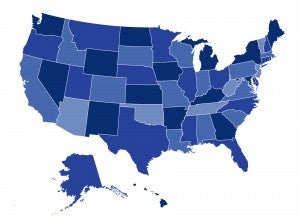
By Emily Curran, Sabrina Corlette, Kevin Lucia and Justin Giovannelli
In the first three years of open enrollment for the Affordable Care Act’s (ACA) health insurance marketplaces, the federal and a number of state governments worked aggressively to promote the value of health insurance, educate consumers about available financial assistance, and enroll individuals in coverage. Nearly all marketplaces—including the federally run marketplace and most state-operated marketplaces—saw incremental enrollment gains each year, despite the law’s lower level of funding for outreach activities following their launch, as well as an increasingly charged political environment.
For the fourth open enrollment period ending in early 2017, momentum behind enrollment efforts dwindled at the federal level following the presidential election. The new administration pushed to repeal the ACA and made a last-minute $5 million cut to outreach funding for the federally facilitated marketplace—a reduction that is under investigation by the Department of Health and Human Services’ Office of Inspector General—leading to the first decline in enrollment. Meanwhile, some state-based marketplaces took a different approach, boosting enrollment efforts and finding short-term solutions to cost increases, that appears to have had an impact. Their success demonstrates the effectiveness of outreach in increasing enrollment in the marketplaces. Such enrollment is likely to increase the affordability of premiums by maintaining balance in risk pools.
In their recent blog post for the Commonwealth Fund, CHIR researchers Emily Curran, Sabrina Corlette, Kevin Lucia and Justin Giovannelli provide an overview of potential factors influencing enrollment changes in the state-based marketplaces, including increased efforts that may have had a positive effect on final selections. While it’s difficult to identify the exact factors that led some states to experience high enrollment gains while others did not, early data suggest that state-based efforts to make larger investments in outreach and consumer assistance likely had an impact.
To read more, visit the Commonwealth Fund blog here.

